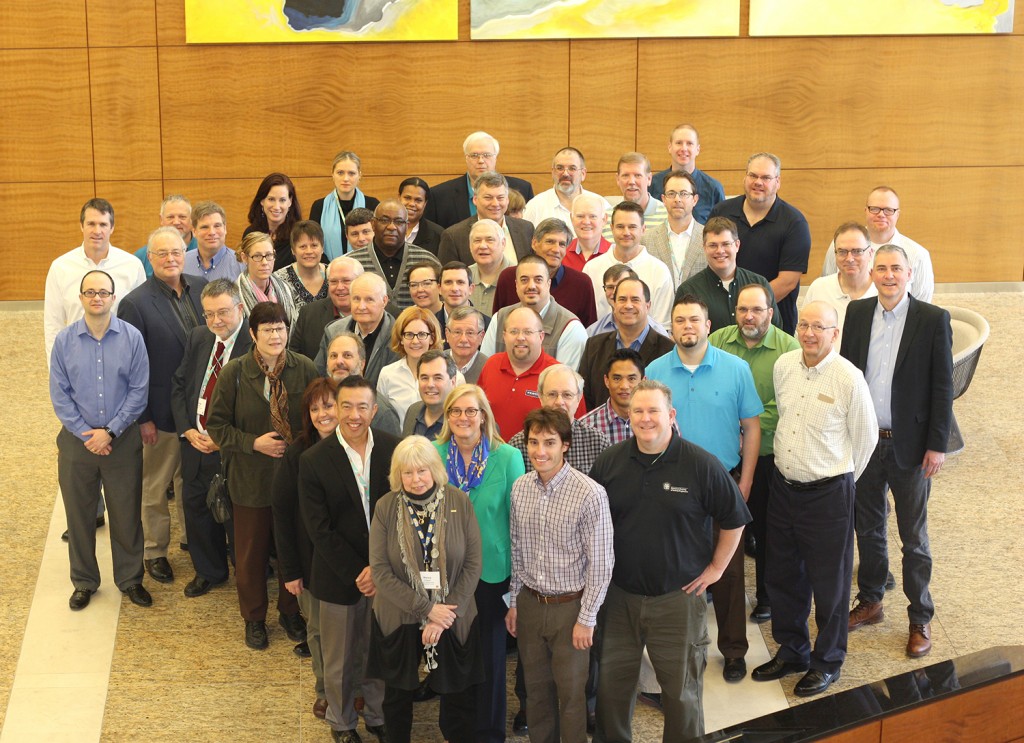The term” life cycle” is not new to most, but the use of the term “Life Cycle Perspective” (LCP) in ISO 14001:2015 (2015) is one of the bigger changes in the most recent revision. Organizations transitioning to the revision must think carefully about how to use a life cycle perspective when planning the transition to the 2015 revision. 2015 requires the use of a life cycle perspective when it states:

6.1.2 Environmental aspects
Within the defined scope of the environmental management system, the organization shall determine the environmental aspects of its activities, products and services that it can control and those that it can influence, and their associated environmental impacts, considering a life cycle perspective.
The previous version of 14001 (2004) only mentioned the term life cycle once in the Annex:
The identification of environmental aspects does not require a detailed life-cycle assessment. Information already developed for regulatory or other purposes may be used in this process
In 2015, the term life cycle appears 18 times, 7 of which are associated with the concept of perspective. 2015 does not explicitly define LCP stopping short and providing only a definition of term “life cycle”:
3.3.3
life cycle
consecutive and interlinked stages of a product (or service) system, from raw material acquisition or generation from natural resources to final disposal
Note 1 to entry: The life cycle stages include acquisition of raw materials, design, production, transportation/delivery, use, end-of-life treatment and final disposal.
[SOURCE: ISO 14044:2006, 3.1, modified ? The words “(or service)” have been added to the definition and Note 1 to entry has been added.]
So the major questions are:
- How should organizations use a life cycle perspective when planning its EMS?
- What sort of evidence will auditors expect to see to confirm a life cycle perspective was used in planning an EMS?
Using a life cycle perspective when planning an EMS.
The introduction of 2015 provides some insight into what the standard means by Life Cycle Perspective when it states:
A systematic approach to environmental management can provide top management with information to build success over the long term and create options for contributing to sustainable development by controlling or influencing the way the organization’s products and services are designed, manufactured, distributed, consumed and disposed by using a life cycle perspective that can prevent environmental impacts from being unintentionally shifted elsewhere within the life cycle.
This statement suggests the purpose of using a life cycle perspective is to prevent the unintentional transfer of environmental impacts. In order to do this, organizations need to expand their view of the impacts derived from their product and services beyond the property fence line. Organizations need to look up their supply chain to understand the environmental impacts caused by their suppliers and those supplying their suppliers. In doing so, the organization may be able to identify environmental impacts of which they had been previously unaware. Armed with this new information the organization can then consider what, if any, control or influence they have over these supply chain environmental impacts.
Similarly, organizations will need to look down supply chains to identify environmental impacts that derive from the use of their products or services by their customers and end users. Also, they need to evaluate their ability to control or influence these impacts..
Once these up chain and down chain impacts have been identified, 2015 expects that organizations endeavor to address the environmental aspects that are causing these impacts where practical. How the organizations choose to address these life cycle aspects depends on several factors including:
- the level of risk the aspect presents to the organizations
- the level of risk the aspect presents to the environment
- the degree of influence or control the organization has over the aspect
The amount of control or influence organizations have over life cycle aspects depends on:
- how far up or down the supply chain is the aspect
- how a design change will affect the performance or cost of the product
- Who controls the design of the product or service
Organizations should also use a life cycle perspective when they are reviewing the potential environmental impacts and aspects from outsourced processes that are performed by other organizations on its behalf.
Evidence of a Life Cycle Perspective During Audits
Proving to an auditor that a life cycle perspective was used to identify the environmental aspects may be more difficult than actually using a life cycle perspective. Based on early experience with 2015 certifications it is apparent that the certification community has not yet reached consensus on what and how much evidence is required to show conformance with the life cycle perspective requirements. At minimum we recommend some discussion of how a Life Cycle Perspective was used perhaps in the high level documentation like an EMS Manual or in the documented procedure how the organizations addressed the requirements of Clause 6 Planning.
A graphic such as the one here describing the various life cycle stages may also be helpful in satisfying auditors need for evidence.
Unfortunately, and in the short term there is likely to be much variation between certification bodies and individual auditors regarding what is acceptable evidence of conformance the LCP requirements. We encourage organizations to have a discussion up front with the auditors before the Stage 1 or transition audit about what the Certification Body (CB) and auditor will be looking for when collecting evidence that a LCP has been used in the EMS.
 The development of ISO 45001 for Occupational Health and Safety Management Systems had a significant setback early this year. By a narrow margin the international committee voted to refer it for additional review and comment. ISO 45001 is being developed to replace OHSAS 18001:2007.
The development of ISO 45001 for Occupational Health and Safety Management Systems had a significant setback early this year. By a narrow margin the international committee voted to refer it for additional review and comment. ISO 45001 is being developed to replace OHSAS 18001:2007.

 ISO/DIS 45001 is the new ISO Standard for Occupational Health and Safety Management Systems. The public comment period for the draft international standard is open until April 2, 2016. One of the important issues debated at the recent meeting of the US TAG in Dallas. TX, Feb 22-25, 2016 was a requirement unique to ISO 45001 that organizations are required to assess “other risks” to the OHSMS. Neither ISO 9001:2015,14001:2015 or OHSAS 18001 have such a requirement. Here is what is required:
ISO/DIS 45001 is the new ISO Standard for Occupational Health and Safety Management Systems. The public comment period for the draft international standard is open until April 2, 2016. One of the important issues debated at the recent meeting of the US TAG in Dallas. TX, Feb 22-25, 2016 was a requirement unique to ISO 45001 that organizations are required to assess “other risks” to the OHSMS. Neither ISO 9001:2015,14001:2015 or OHSAS 18001 have such a requirement. Here is what is required: eliminate the hazard
eliminate the hazard


![652px-Logo-ISO[1]](http://envcompsys.com/wp-content/uploads/2013/12/652px-Logo-ISO1-300x276.jpg)


